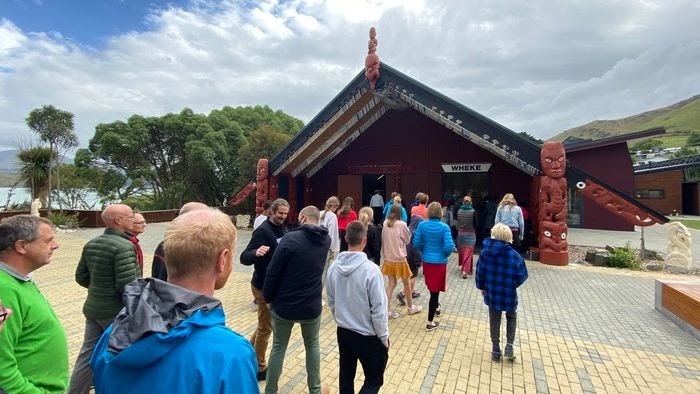
December 1st, 2020
Being Pākehā-Understanding Te Tiriti
I used to think that there was a ‘right way’ to do biculturalism. I thought it was a matter of talking to the person with the right role, finding out the correct answer for the matter at hand, then putting the right pieces into the puzzle and rolling out the plan. Bit of pōwhiri here, patterned design there, slide in a few Māori experts…
Rather than full-blown ignorance, I’ll chalk this up as naivety. I didn’t really know what I didn’t know, and I didn’t know that I was essentially thinking about biculturalism in a tokenistic and probably offensive way. A lot of us end up here at one point or other.
I’m lucky to work with a few (Pākehā) organisations, including Leadership Lab, who are looking at their Treaty Partnership obligations quite seriously and am personally a couple of years into my journey of learning te reo māori. The more I learn about being pākehā in a way that supports the mana of Te Tiriti o Waitangi the more I realise how much I don’t know, and the more I think that process will continue.
Early on this journey I thought about biculturalism as the weaving in of things from another culture – Te Ao Māori – into what we do, or perhaps the weaving of two different cultures together. Currently, I’m realising that a truly bicultural thing will likely be different from either of the two cultures of which they are comprised. It’s like interspersing blue and yellow and comparing it with the colour green. They’re made up of the same things, sure, but they’re also fundamentally different.
Practically speaking, this means that working in partnership is exactly that – partnership. Our Leadership Lab colleague and friend Danette summarised this beautifully recently as “don’t invite Māori to the table once it’s already set”.
As we go about our everyday work and life following strategic plans and set processes it can be easy to get stuck in auto-pilot and do “what we know is good process”. The invitation exists every time we make a decision to reconsider what we’re trying to achieve and how we might foster a more equitable and inclusive Aotearoa in the process. Te Tiriti provides a context and a framework for working in a way that’s better for all, and the more that I catch glimpses of truly bicultural work the more I believe it’s not only better for all, it’s just better.
– Jason Pemberton, Leadership Lab, YouThink

December 1st, 2020
Being Pākehā-Understanding Te Tiriti
I used to think that there was a ‘right way’ to do biculturalism. I thought it was a matter of talking to the person with the right role, finding out the correct answer for the matter at hand, then putting the right pieces into the puzzle and rolling out the plan. Bit of pōwhiri here, patterned design there, slide in a few Māori experts…
Rather than full-blown ignorance, I’ll chalk this up as naivety. I didn’t really know what I didn’t know, and I didn’t know that I was essentially thinking about biculturalism in a tokenistic and probably offensive way. A lot of us end up here at one point or other.
I’m lucky to work with a few (Pākehā) organisations, including Leadership Lab, who are looking at their Treaty Partnership obligations quite seriously and am personally a couple of years into my journey of learning te reo māori. The more I learn about being pākehā in a way that supports the mana of Te Tiriti o Waitangi the more I realise how much I don’t know, and the more I think that process will continue.
Early on this journey I thought about biculturalism as the weaving in of things from another culture – Te Ao Māori – into what we do, or perhaps the weaving of two different cultures together. Currently, I’m realising that a truly bicultural thing will likely be different from either of the two cultures of which they are comprised. It’s like interspersing blue and yellow and comparing it with the colour green. They’re made up of the same things, sure, but they’re also fundamentally different.
Practically speaking, this means that working in partnership is exactly that – partnership. Our Leadership Lab colleague and friend Danette summarised this beautifully recently as “don’t invite Māori to the table once it’s already set”.
As we go about our everyday work and life following strategic plans and set processes it can be easy to get stuck in auto-pilot and do “what we know is good process”. The invitation exists every time we make a decision to reconsider what we’re trying to achieve and how we might foster a more equitable and inclusive Aotearoa in the process. Te Tiriti provides a context and a framework for working in a way that’s better for all, and the more that I catch glimpses of truly bicultural work the more I believe it’s not only better for all, it’s just better.
– Jason Pemberton, Leadership Lab, YouThink


